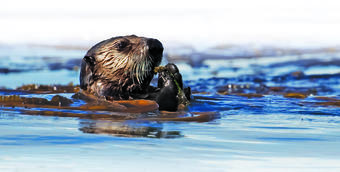Thanks to a quarter-century of research and monitoring, scientists now know how different wildlife species were injured by the 1989 Exxon Valdez oil spill and how long it took for populations to recover.
This information may have important implications when responding to other oil spills, when conducting damage assessment studies after spills and when considering the environmental risks associated with extracting and shipping oil.
“Because wildlife species in the spill area vary so much in terms of what they eat, habitats that they use, and their ability to rebound after a drop in numbers, researchers saw huge differences in how long it took for populations to recover,” said Dan Esler, a Research Wildlife Biologist with the U.S. Geological Survey and lead author of a recently released paper on the subject. “Some species were barely affected, others such as bald eagles, rebounded quickly, and other species took much longer to recover, such as sea otters.”
To read the full articles in the USGS news visit:
https://www.usgs.gov/news/wildlife-recovery-following-exxon-valdez-oil-spill-was-highly-variable-across-species?utm_source=dlvr.it&utm_medium=Twitter&qt-news_science_products=3#qt-news_science_products



